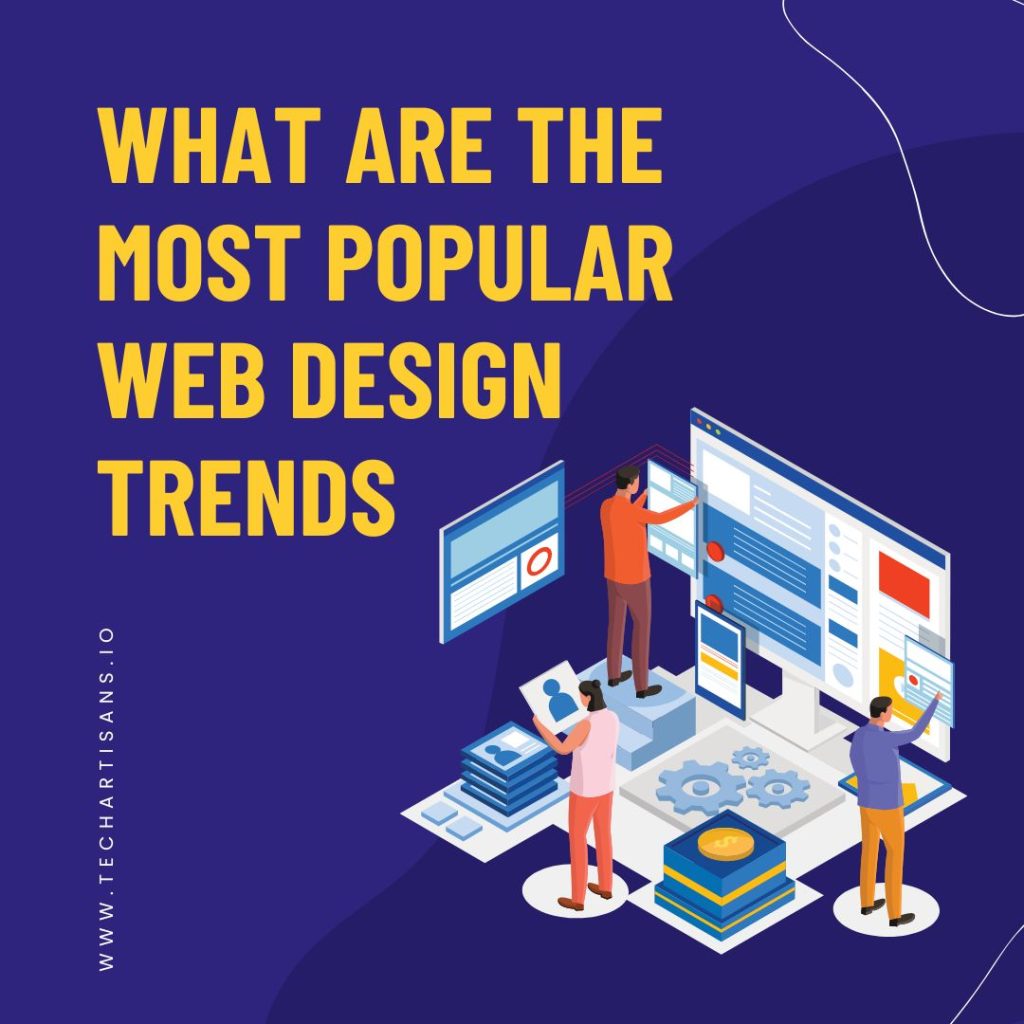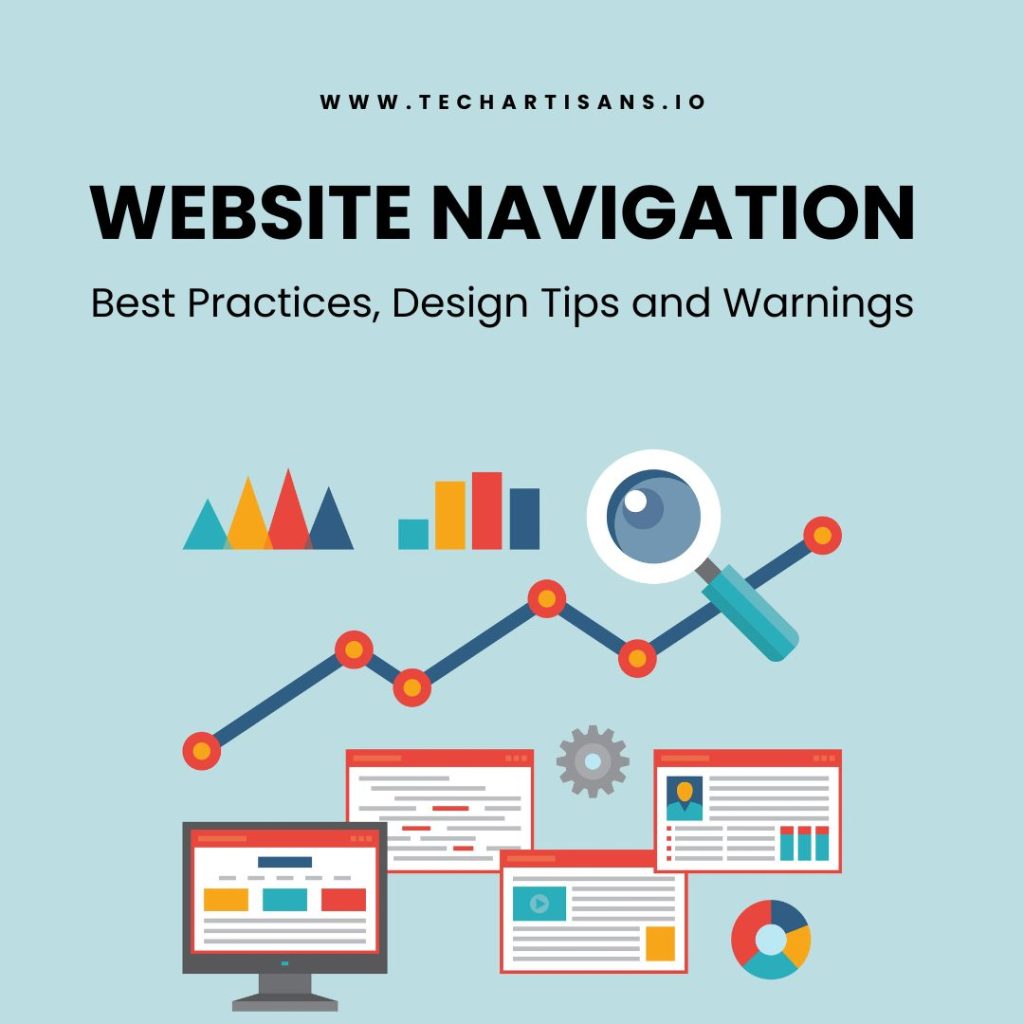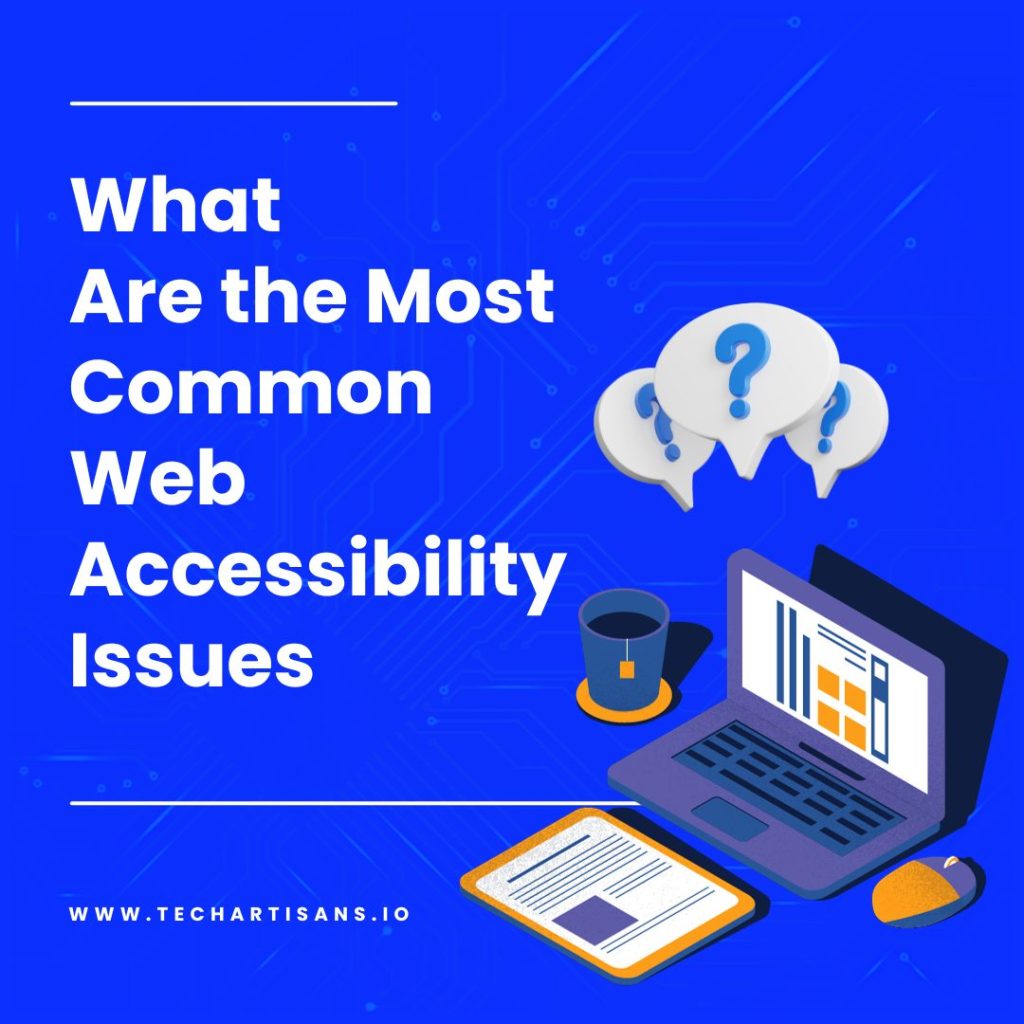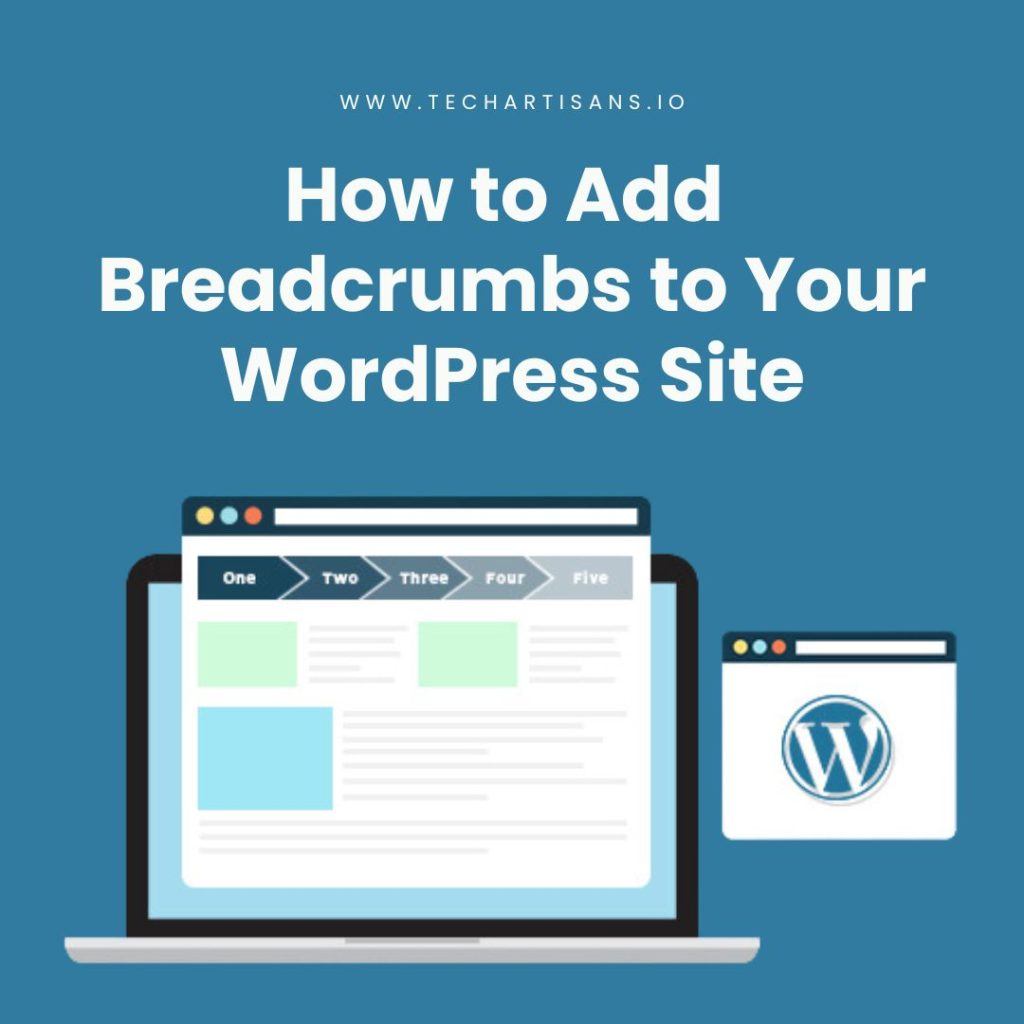In the dynamic realm of digital aesthetics, the noteworthy evolution of web design trends has redrawn the landscape of online platforms. Keeping up with these changes is crucial for business owners to stay competitive. It’s not just about looks but also user experience and functionality. Small and medium businesses should stay updated with the latest trends. Let’s explore the future of web design, where innovation meets responsive design, helping companies to engage, captivate, and expand their online presence.
Future Web Design Trends
Let’s discover the transformative website design trends shaping the future of digital business landscapes.
User-Centric Web Design
User-Centric Web Design is not just a trend but a philosophy that shapes the future web design landscape. Centered around meeting the needs and preferences of the end-user, this approach ensures every design element aligns with delivering the optimal user experience.
Learn more about the importance of user experience in SEO.
Emphasis on User Experience
Web design trends increasingly prioritize user experience (UX) because it profoundly impacts user satisfaction and interactions. A website should look good and provide a pleasant navigation experience. Effective UX design involves understanding user needs and behaviors, focusing on speed, intuitive navigation, accessibility, and responsive design for various devices.
Discover UX vs UI design differences
Intuitive Navigation and Interactive Elements
Effective web design relies on intuitive navigation with a clear structure and recognizable cues. Interactive elements such as buttons and animations engage users, encouraging interaction and prolonged site visits. When done right, these aspects enhance the user experience in line with future design trends.
Increased Web Accessibility
Increased web accessibility is a rising trend in the digital world, proving to be more than just a fad. This focused effort towards inclusivity ensures that websites and web tools are usable for everyone, including individuals with disabilities.
Explore how to make your website accessible.
Design for All Users, Including Disabled
Designing with digital accessibility in mind, especially for people with disabilities, is crucial in web design. It’s not just about inclusivity but also about shaping your brand’s reputation and expanding your audience. Features like alt-text, captions, and keyboard-friendly navigation make your website usable by everyone. This approach widens your reach, boosts user satisfaction, and builds a positive brand image.
Read about the benefits of having an accessible website.
Steps for Improving Web Accessibility
To enhance accessibility in web design, start by following the Web Content Accessibility Guidelines (WCAG). Use Accessible Rich Internet Applications (ARIA) landmarks to help users with disabilities navigate your site. Regularly test for issues using tools like WAVE or Google’s Lighthouse and make immediate improvements. Always prioritize Inclusive Design, ensuring ease of use and equal access to your content for all users.
The Y2K Aesthetic
The Y2K aesthetic, a throwback to the turn of the millennium, is making a resounding comeback in web design trends. Let’s explore how this trend can be harnessed to create visually striking and engaging business websites.
Learn about the most important web design trends to know.
Resurgence of 90s-2000s Design
The Y2K web design aesthetic from the late 1990s and early 2000s is returning. It blends nostalgia with a futuristic vibe, using vibrant colors, dynamic fonts, and playful graphics. This trend adds fun and creativity to modern web design, allowing bold aesthetics while prioritizing user experience and functionality.
Incorporating Nostalgia and Playful Designs
Incorporating nostalgia in web designs evokes a sense of familiarity and comfort among users, while playful scenarios keep interactions engaging and enjoyable. When blended seamlessly, these two aspects create a unique user experience that resonates with a broad audience demographic, making the website memorable and boosting brand recognition.
Dark Mode
Dark Mode, a visually striking and increasingly popular web design trend, offers an alternative, user-friendly browsing experience that’s gentle on the eyes and aesthetically pleasing.
Rising Trend and User Advantages
Dark Mode’s popularity is because it is user-friendly, making browsing comfortable in low-light settings, reducing eye strain, and helping conserve battery power on OLED screens. It also adds a stylish, modern look to websites, enhancing brand appeal and providing an immersive, engaging user experience in line with future web design trends.
Understand why responsive web design is important.
Tips for Adding Dark Mode
Implementing Dark Mode requires careful design considerations. Use CSS media queries to detect user preference and apply the appropriate theme. Ensure that color contrasts are sufficient for readability and accessibility. It’s important to offer a toggle option for users, allowing them to switch between dark and light modes according to their preferences.
Artificial Intelligence in Web Design
The role of Artificial Intelligence (AI) in web design is rapidly growing, reshaping the way we create, manage, and interact with digital landscapes. As one of the critical future web design trends, AI opens up new avenues for improving user experience and customization, making it a vital component in businesses’ digital strategy.
Debunking Myths
AI in web design is a valuable tool, but it won’t replace human designers. It needs more human creativity and understanding of cultural nuances and emotions. AI should be seen as a partner, not a replacement, helping with repetitive tasks and allowing designers to focus on creativity and strategy.
Tools and Applications of AI
AI-powered tools like Adobe Sensei and Wix ADI are revolutionizing web design. Adobe Sensei employs machine learning to offer design suggestions and automate tedious tasks, freeing designers to focus more on creativity. On the other hand, Wix ADI can generate a unique website design in minutes by gathering information about the business and its preferences.
Discover the benefits of progressive web apps in web design.
Parallax Zoom Scrolling
Parallax zoom scrolling is an innovative web design trend that will capture user attention through its dynamic and immersive visual storytelling capabilities.
Creating Depth and Movement in Web Design
Parallax Zoom Scrolling creates a sense of depth and movement as users scroll through a webpage. It layers images and content, giving the illusion of 3D motion and providing a unique, immersive user experience. This is visually appealing and enhances user engagement, captivating visitors and encouraging them to explore the website further.
Moreover, this dynamic scrolling effect allows for creative storytelling, effectively guiding a user’s journey through the website.
Check out the latest web design trends.
Enhancing User Engagement
Dynamic scrolling effects like Parallax Zoom Scrolling stimulate user interaction by creating visual interest and a captivating narrative flow. When implemented strategically, these effects guide the user’s attention to key elements on the webpage, thereby boosting user engagement. Such a dynamic and interactive website design prompts users to explore the website further, ultimately increasing dwell time and potential conversion rates.
Mobile-First Design
Mobile-First Design, a forward-thinking approach shaping the future of web design trends, prioritizes optimal viewing and interaction experiences for mobile devices, acknowledging the prevalence of mobile web browsing in today’s digital age.
Prioritizing Mobile Users in Web Design
Mobile-first design is becoming dominant in future web design trends due to increased mobile browsing. It starts with designing smaller screens and then scales up for larger ones, prioritizing load times and site performance for a seamless mobile experience. The focus is on simplicity, usability, and responsiveness across different screen sizes.
Read about the benefits of having a responsive website.
Responsive Layouts and Touch-friendly Elements
Responsive layouts adapt to various screen sizes, ensuring the website looks good on all desktop, tablet, or mobile devices. Touch-friendly elements mean interactive parts of the website, like buttons and links, are easily usable on touchscreens. Together, these aspects provide an optimized browsing experience, cementing Mobile-First Design as a key future web design trend.
Minimalistic and Clean Designs
Minimalistic and clean designs are emerging as a powerful future web design trend, striking a balance between aesthetics and functionality to create simple, intuitive, and visually pleasing digital experiences.
Shift Towards Simple Designs
A desire for clarity and ease of use fuels the shift towards minimalistic and clean designs. Web users appreciate design that reduces cognitive load, helping them quickly understand the purpose of a site and find the information they need. This trend is characterized by ample whitespace, streamlined content, and simple navigation, allowing the site’s core message to shine uncluttered.
Explore the best web design trends for small businesses.
Importance of Whitespace and Focused Content
Whitespace, or negative space, is vital in minimalistic web design. It’s not just empty; it enhances readability and focus by creating room between elements, guiding users, and making content easy to digest. The minimalistic design focuses on delivering clear, concise messages by removing unnecessary components, ensuring visitors can quickly understand your offerings without distractions.
Immersive 3D Elements
Immersive 3D elements are set to revolutionize future web design trends, providing a new dimension of interactivity and engagement that captivates users and immerses them in a virtual environment.
Engaging Users
3D graphics and animations engage users by adding depth and realism, improving the user experience. They can create narratives, guide users, and boost dwell time, increasing the potential for conversions. Immersive 3D elements are a key feature in future web design trends.
Tools and Techniques
Integrating 3D elements into web design involves using tools like Blender for 3D modeling and Three.js for rendering interactive 3D graphics. Techniques like WebGL can be implemented for hardware-accelerated 3D graphics, while AR/VR technologies can enhance immersion. It’s important to optimize these 3D elements for web performance to ensure a seamless user experience.
Conclusion
In conclusion, the future of web design trends is ripe with innovation and creativity. The digital landscape continuously evolves from AI-powered tools and dynamic parallax zoom scrolling to mobile-first design and immersive 3D elements. Embracing minimalistic design principles, focusing on whitespace and focused content, will create seamless and captivating user experiences. As business owners, staying abreast of these trends is crucial in maintaining a competitive edge and engaging your audience effectively in the digital age.







